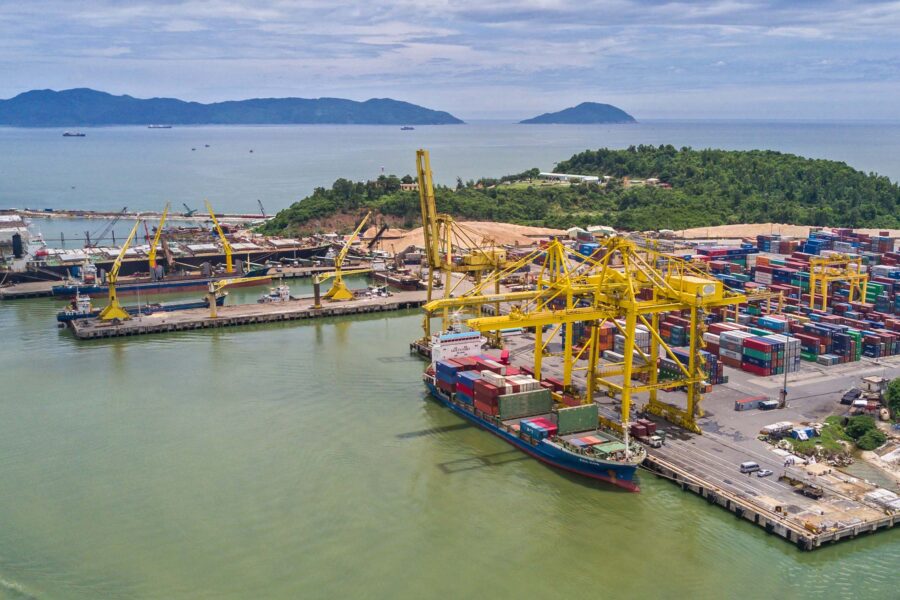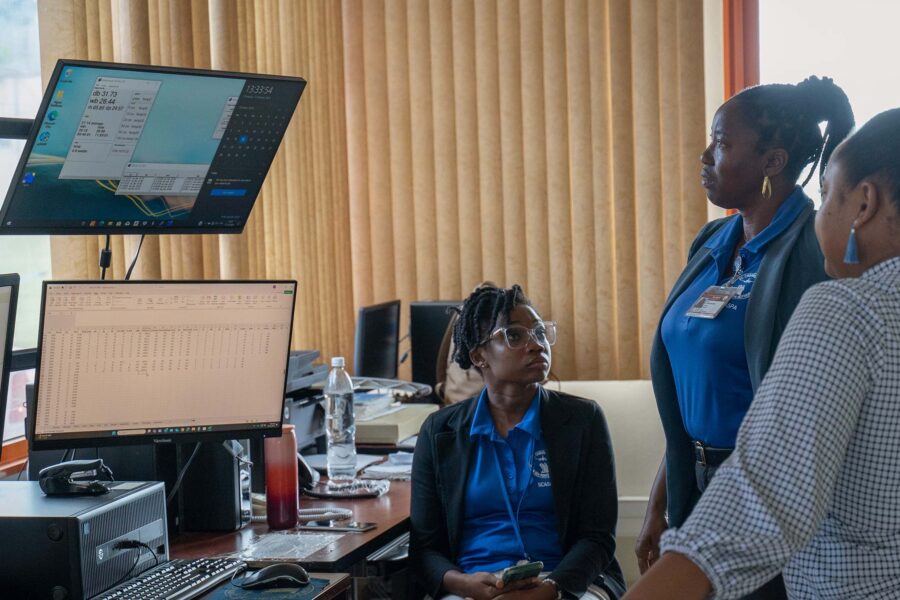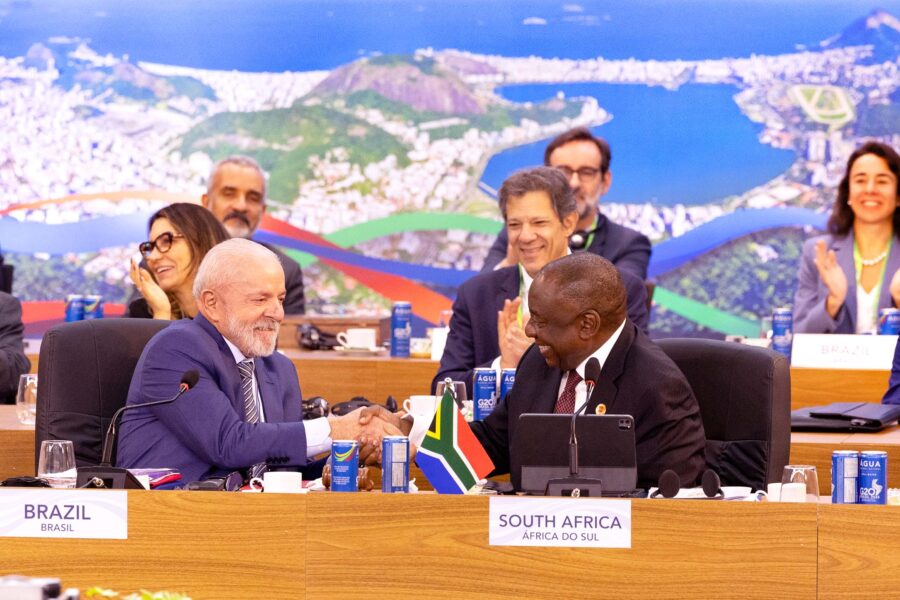Mobilizing business investment for the SDGs
With just seven years to go, the SDGs remain severely underfunded, as cash-strapped governments worldwide struggle to resource them. Generating more private-sector investment that seizes the huge business potential of the Goals is therefore critical
Financing — Global

The world is alarmingly off track to end hunger, poverty, and a host of other unsustainable practices by 2030. Governments have struggled to keep their Sustainable Development Goal (SDG) efforts on course as the pandemic, climate crisis, and surging energy and food prices have gobbled state resources. It’s time for the private sector to accelerate its efforts – but what will it take for businesses to close the investment gap?
The SDGs cover many goods, services, and – indeed – responsibilities that to varying degrees are provided by the private sector. In many instances, solving some of the world’s greatest challenges has proved to be a powerful force for business innovation – as evidenced by the COVID-19 vaccine, electric vehicles, and drought-resistant crops.
Governments are largely responsible for many SDG-related services such as education and sanitation. Nevertheless, most of their interventions to drive the SDG agenda take the form of legislation and regulation – compelling companies and citizens to treat each other and the environment more responsibly. These are sometimes combined with incentives (such as subsidies to promote the use of non-fossil energy) or contractual agreements (for example, to provide toll roads, river crossings, ports, and railways). The UN Secretary-General’s Stimulus plan calls for financial reform and provides a roadmap for broad international mobilization of SDG investments, including at least USD 500 billion a year for affordable, long-term financing for countries in need. It is clear that meeting the SDGs requires government and private-sector involvement. The question is how both can work better together for the benefit of all.
Mind the gap
When the SDGs were adopted by 193 countries in 2015, the cost of solving the world’s most pressing economic, social, and environmental problems was estimated at USD 1.4 to 2.5 trillion a year. This was an underestimate.
In July 2022, a group of academics published a study called Investment needs to achieve SDGs: An overview that examined estimates of the costs of achieving some of the main SDGs as a key first step in mobilizing the necessary financial resources. For universal hunger, this was costed at up to USD 300 billion a year, while universal healthcare was priced at USD 200 to 400 billion annually.
The biggest annual investment gaps, meanwhile, were found for:
- climate action (SDG 13) – up to USD 3 trillion
- clean water and sanitation (SDG 6) – up to USD 1.1 trillion
These are enormous numbers, but they are only a fraction of the USD 65 trillion in assets held by global investment portfolios worldwide, according to the International Monetary Fund. Clearly, the investment gap in sustainable development is not caused by a shortage of capital. The challenge is to steer more of this money into the SDGs – and the good news is that this is starting to happen.
Taking a lead
In many ways the private sector is already taking a strong lead. Bloomberg estimates that one-third of the projected total assets under management will be managed according to sustainable principles by 2025 – a sum that could surpass USD 50 trillion by 2025. Add America’s Inflation Reduction Act, which provides USD 500 billion of aid for clean energy investments, and new measures in Europe and elsewhere, and the stage is set for a boom in private-sector investments into two of the costliest SDG challenges: energy and climate change.
That’s a strong incentive for businesses to align their investments with the SDGs. To secure the finance they need for growth, companies will have to demonstrate that their activities meet sustainability guidelines.
But many corporate boards have now grasped a deeper truth: that in many industries, ethical behavior is the key to professional and business longevity. There is growing evidence that products and services aligned with the SDGs deliver faster and more sustained growth. Building electric cars – or bicycles – clearly has a brighter future than building coal-fired paddle steamers. Humanitarian initiative is also rewarded. In tight labor markets, companies that promote diversity find it easier to hire good people – and win more customers.
Profiting from principles
All these factors help explain why more than 18,000 companies around the world, of every size, have joined the United Nations Global Compact and signed up to implement corporate principles that will help us achieve the SDGs. These Ten Principles cover human rights, labor practices, the environment, and the fight against corruption.
Our CFO Coalition for the SDGs builds upon this engagement: chief financial officers of companies capitalized at a combined USD 1.7 trillion have committed to invest more than USD 500 billion toward achieving the SDGs. They have also pledged to develop principles, frameworks, and recommendations to integrate the SDGs in corporate finance and create a market for mainstream SDG investments.
Now, the time has come to take this to the next level. Northern countries are heating up and the reality of global warming is becoming clearer with every passing month. Humankind is embarking upon a vast energy and food-system transition. As we switch from fossil to renewable resources, companies are changing what they do, how they do it, and who they sell to. Corporate money is helping to close the SDG investment gap across many areas.
Becoming a force for good
It is often tempting to direct investment to the richest markets, rather than those in the Global South with the greatest need, despite their potential for faster, longer growth. By thinking more creatively and looking at every aspect of their business through the SDG framework, however, some vanguard companies are extending their beneficial impacts upon our societies.
Take the food industry as an example. Olam, a Nigerian foods group, has trained more than 430,000 small producers in improved farming practices. American multinational manufacturer Mars has helped small-scale farmers in Indonesia increase cocoa production. And Intel Corporation, an American semiconductor champion, has provided innovative software tools to help smallholders test soil, buy seeds, and connect with markets. These examples – and there are many more – demonstrate the power of companies that take the SDGs to their hearts to benefit those in greatest need, while also benefiting their own businesses.
The SDGs present not only the biggest challenge, but also the biggest business opportunity of our lifetime. Please do your business – and our planet – a favor. Join us, become a force for good in the world and improve the prospects for your own business in the process. Together we can help get the world back on track to achieve the SDGs by 2030 and pass the planet on to our children in a better condition than we received it.





